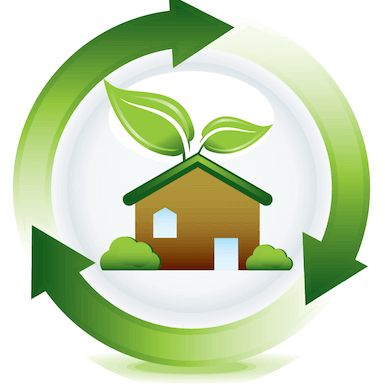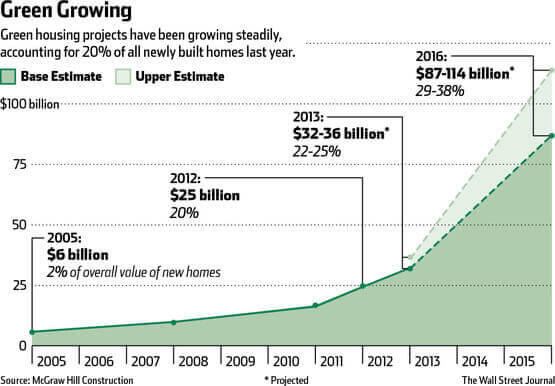Green Real Estate Surges Into The Future

Real Estate is Getting Green
Residential real estate development is starting to see an across the board standard of “green real estate” in the form of environmental conservation consciousness, and this is likely to have a huge impact in the future of real estate investment. Bigger developers have been slowly but steadily jumping in board to incorporate green home standards into mainstream residential development, and the result has been a welcome increase in energy efficient houses, despite or perhaps because of the tight economy we’ve been living through during the last 5 or 6 years.
Statistics show that “green homes” account for roughly 20% of new homes that were constructed in 2012; a percentage that amounts to about $25 billion worth of the housing market. [Sourced from data by McGraw Hill Construction. Analysis shows that this trend will persist, increasing to an average of 33.5% of all new construction over the next 3 years.
“The green homes market has evolved beyond the crunchy-granola, Boulder types,” said David Johnston, a Colorado consultant and co-author of “Toward a Zero Energy Home.” “We have mainstream builders doing this.”
In addition to what one can only hope is an increase in environmental consciousness, the personal pocketbooks of many are positively affected by the trend as well. Federal tax credits are a big motivator and happy homeowners and builders are taking advantage. Some green home improvements that could ramp up an end of year refund are the following:
- Water source heat pumps
- Better insulation
- Low-flow shower heads, faucets and toilets
- Hardwood flooring throughout
- Well insulated energy windows
- Energy Star rated
- Ceiling fans
- Drought tolerant landscaping
- Energy efficient lighting
Research indicated that going green when rehabbing a home will increase its value when it comes time to flip it. A study done in 2012 at the University of California showed that California houses that had gone green sold for about 9% more than houses that were comparable in area, size and design, but lacked ecological improvements.
It’s true that getting ecologically conscious around your rehabs may slightly increase costs, but material prices have come down in recent months, which will better enable rehabbers to join in and take advantage of a trend that will ultimately render higher returns. Bruce W. McIntosh, Chief operating officer of Nexus Energy Homes, says investors and homeowners can expect to pay only five to 10 percent more to go green.
Going green is “attractive to private-sector interests because they can find a ready market and compete financially. They appeal to local governments because they can be the building blocks of a growing economy and high-quality, economically sustainable neighborhoods and communities while also helping to create a cleaner, healthier environment” according to statements issued by an Executive Summary by the EPA’s Office of Sustainable Communities [sourced from a pdf distributed by epa.gov]
In the interest of better public relations, higher tax returns, economic, as well as ecological savings and, last but most certainly not lease, taking care of good old Madre Tiera (Mother Earth), go green with your rehab investments. The practice is an all around win win.

